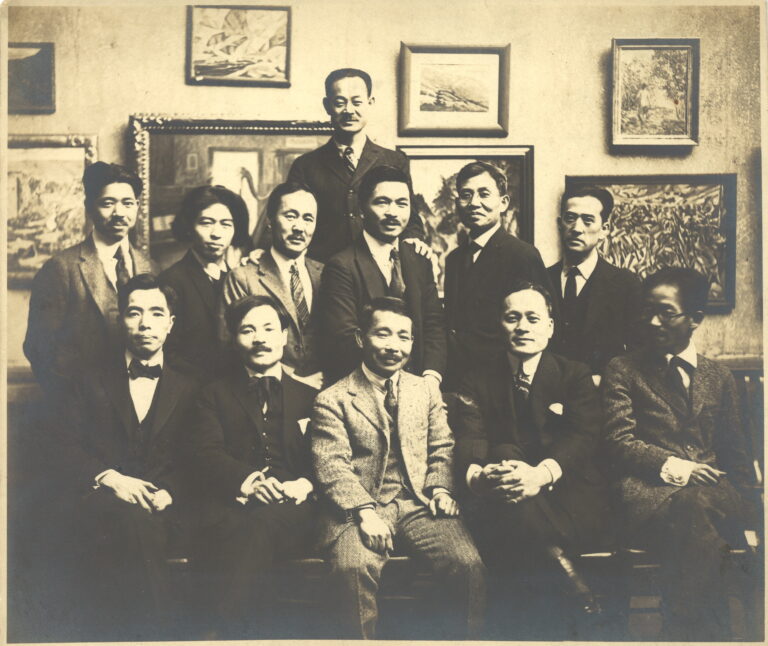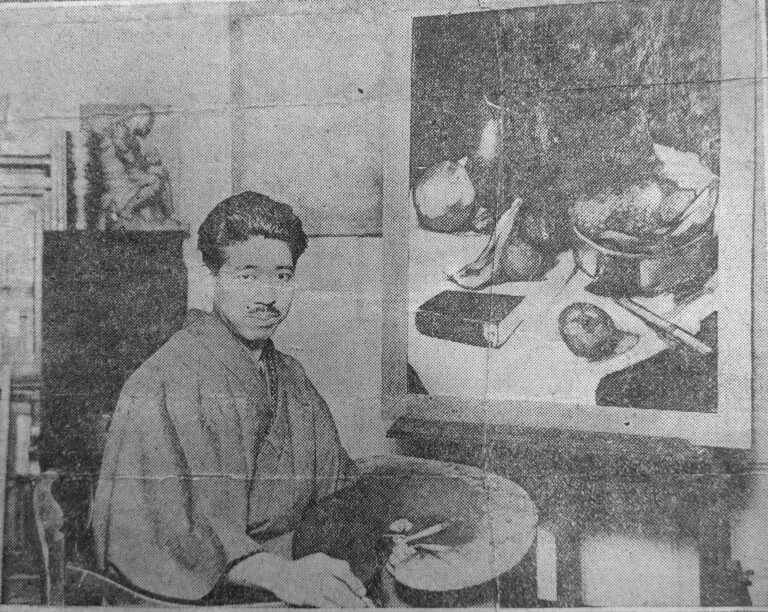1922
Gacho-kai Exhibition

The art styles of the New York Japanese Art Association artists ranged from Western paintings to applied arts. This was probably because many Japanese artists at the time were supported by Japanese companies in the area. Later, the New York Japanese Art Association was consolidated into the newly formed Japanese Painting Association named “Nihon-jin Gakai”, which was composed mainly of painters and sculptors. In 1921, the Nihon-jin Gakai was renamed the “Gacho-kai”.
The patrons of the Gacho-kai included Jinushi Ennosuke (manager of Morimura Bros), Shirae Shinzo (deputy manager of Yamanaka & Co.), Kodama Kashiro (manager of Taiyo Trading Co.), Tsutsumi Hikokazu (Takata & Co.), Kumasaki Kyo (consul general), Tajima Shigeji (deputy manager of Mitsui & Co.), Tamura Yozo (manager of South Manchuria Railway Co.), Minami Jinosuke (Manager of Suzuki Co.), Takata Takao(Manager of Takata Iwai & Co., New York Branch), and Nishi Iwao (Commercial Officer). Therefore, this association, like the Japanese Art Association of New York, was supported by Japanese companies in the area.
The Gacho-kai held an exhibition at the Civic Club from November 1st to 21st, 1922 that featured 54 paintings and sculptures. The exhibition included works by Ando Kunie, Hara Makoto, Inaba Shotaro, Eitaro Ishigaki, Kotato Gado (T.K. Gado), Yasuo Kuniyoshi, Ryokichi Miki, Toshi Shimizu, Tetsuen Tera, Bumpei Usui, Torajiro Watanabe, Masaji Hiramoto, and Gozo Kawamura.
Eitaro Ishigaki exhibited four works at this exhibition: “Triumph of Death,” “Mystic Shore,” “Twilight-Hour,” and “Fruits,” but the details of these works are unknown because they have been scattered and lost.
Evening Telegram shows Eitaro Ishigaki working in his studio and a work that is believed to be “Fruits,” which was included in the exhibition. Eitaro Ishigaki told the Telegram,
“My picture, ‘The Triumph of Death’, which is on exhibition now at the Civic Club, is one of my favorites,” he explained. “Some friends ask me how I, who seem so cheerful, could have chosen such a gloomy subject. I had just finished D’Annunzio’s novel, and I was so filled with it that I immediately painted this picture. As it turned out, however, I do not feel that it expresses at all the same spirit as found in D’Annunzio. It shows a dead woman lying on the seashore and a man weeping over her.”
Eitaro Ishigaki mentioned in the New York Shimpo that,
“”The Triumph of Death” was produced five or six years ago when I was inspired by Oscar Wilde’s decadent philosophy and infected by Baudelaire’s Satanism, so it is a distant relative of mine now that I have undergone a radical change of thought since then.”
(Eitaro Ishigaki, “Gyokuseki Douka,” New York Shimpo, Nov. 15, 1922)
Based on this, it is thought that “Triumph of Death” was inspired by the fin-de-siècle art to which Eitaro Ishigaki was devoted in the 1910s.

